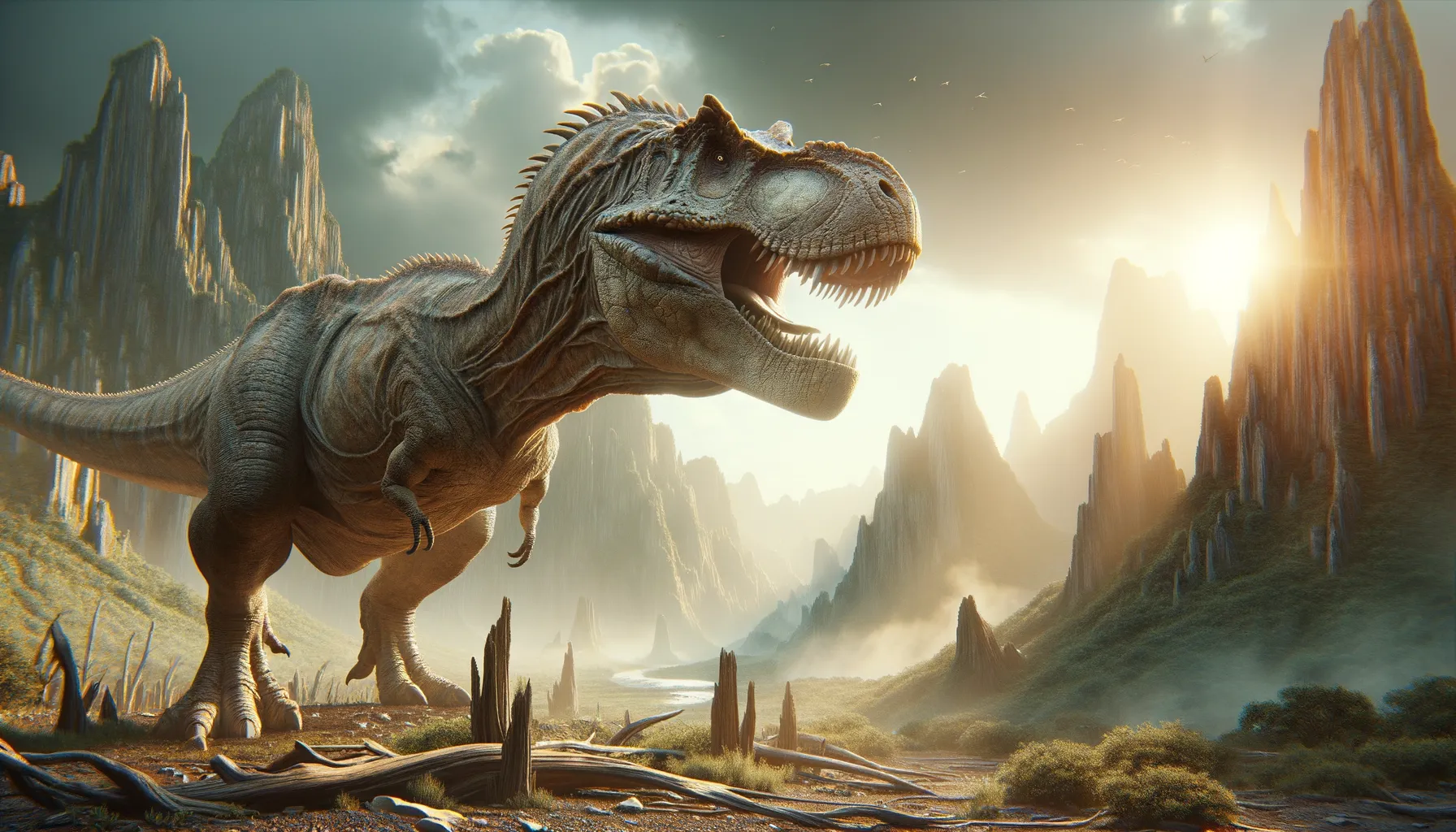
Zhuchengtyrannus
A colossal predator of ancient China.
Period
Cretaceous
Length
Roughly 10-11 meters long.
Height
About 4 meters tall at the hips.
Weight
Approximately 6 tons.
Zhuchengtyrannus was a formidable predator that roamed the land in what is now China, during the late Cretaceous period, approximately 73 to 66 million years ago. Closely related to the infamous Tyrannosaurus rex, this dinosaur shared many of its physical traits, including a massive skull and powerful jaws. It was part of the tyrannosaurid family, known for their dominance as top predators in the prehistoric ecosystems they inhabited.
Diet
Zhuchengtyrannus was a carnivore, primarily hunting large herbivorous dinosaurs. Like its relatives, it likely employed a powerful bite to subdue its prey.
Hunting
This dinosaur was likely an ambush predator, using its keen senses to detect prey from a distance. It probably relied on short, powerful bursts of speed to catch its targets off guard, ensuring a swift and deadly attack.
Environmental challenges
Zhuchengtyrannus lived in a period of significant environmental changes, including fluctuations in climate and sea levels. These alterations could have affected the availability of prey and the dinosaur's ability to find suitable territories. Competition from other large predators of the time may also have posed a challenge, requiring adaptation and strategic hunting methods.
Speed
Relatively fast for short bursts.
Lifespan
Estimated to be around 25-30 years.
First discovery
Found in Shandong, China, in 2011.
Fun Facts
- Zhuchengtyrannus means 'Tyrant from Zhucheng', named after the place in China where its fossils were discovered.
- This dinosaur belonged to the same family as the famous Tyrannosaurus rex, known for its fearsome predatory skills.
- Zhuchengtyrannus lived during the Late Cretaceous period, around 73 million years ago.
- Scientists believe Zhuchengtyrannus was about 30 feet long, making it one of the larger theropods.
- Only a few bones of Zhuchengtyrannus have been found so far, including parts of the skull and jaws.
- Despite limited fossils, researchers think Zhuchengtyrannus had a powerful bite similar to that of its relative, the T. rex.
Growth and Development
Like other large theropods, Zhuchengtyrannus would have experienced rapid growth during its early years, reaching maturity quickly to compete for territory and mates. Juveniles likely required significant amounts of food to sustain this growth rate, potentially hunting smaller prey until they could compete with adults.
Habitat
This dinosaur inhabited lush floodplains, where it had access to a wide variety of prey. The area was rich in vegetation, supporting a diverse ecosystem that included numerous herbivorous dinosaurs. Rivers and lakes provided hydration and moderated the climate, offering a temperate environment suitable for large predators.
Interaction with other species
As an apex predator, Zhuchengtyrannus likely had minimal direct interaction with larger herbivores, other than when hunting. It may have had to compete with other carnivorous species for resources, leading to territorial disputes. Scavenging from other predators' kills would have been a common practice, maximizing its chances of surviving in a competitive ecosystem.
Natural lifespan
Its natural lifespan was likely around 25–30 years.
Reproduction
Zhuchengtyrannus likely reproduced by laying eggs, with nesting sites chosen carefully to protect the young from predators and environmental hazards. Clutches of eggs would have been tended to by one or both parents, ensuring their survival until they hatched. Young dinosaurs might have stayed with their parents for initial protection and nourishment.
Social behaviour
Despite being a fearsome predator, Zhuchengtyrannus may have been somewhat social, at least for specific purposes such as hunting or rearing young. It likely preferred solitary living once matured, relying on stealth and surprise for hunting rather than collaborative efforts. Any social interactions would have been strategic, focusing on survival and reproduction.
Fossil locations
Fossil remains of Zhuchengtyrannus were discovered in the Zhucheng region of Shandong Province, northeastern China. The area is known for a rich array of dinosaur fossils, particularly from the late Cretaceous period. Zhuchengtyrannus fossils were found in association with other tyrannosaurids, indicating a shared ecosystem with similar large carnivores of its time.
